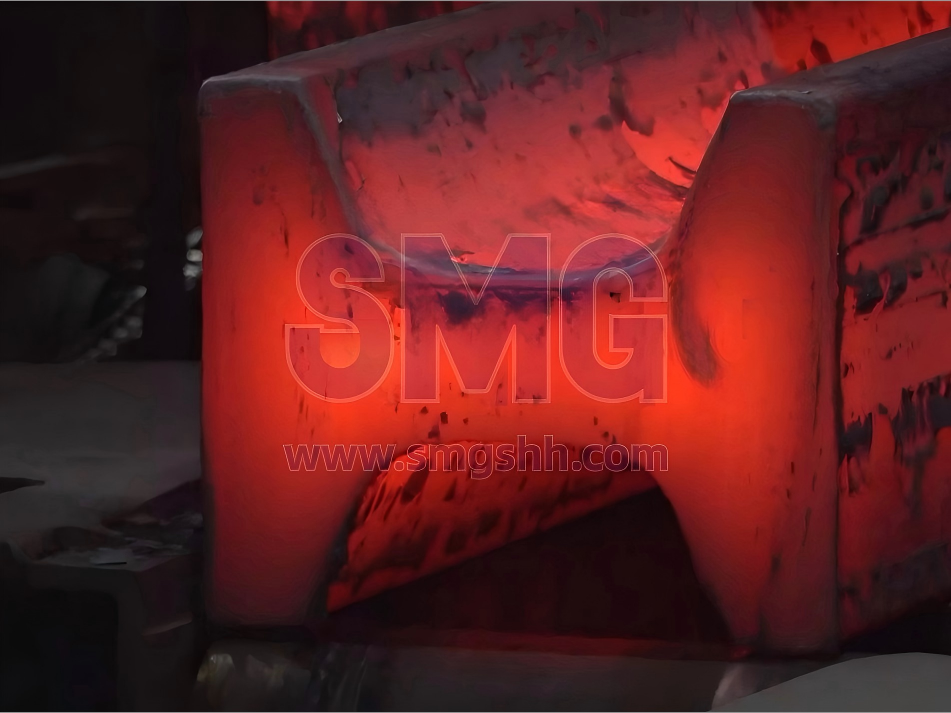
Date: 2025/7/9

Category: Metallurgical encyclopedia terms

Views: 89
1.Heat Treatment of Billets
Steel rail production imposes strict requirements on billet heating, including minimal oxidation, low decarburization, and small temperature differences. These requirements directly affect the final quality and production efficiency of steel rails.
.jpg)
(1) Oxidation Issues in Billet Heating
During high-temperature heating, billets undergo oxidation, forming oxide scale on their surfaces. This oxide scale may remain on the surface of the rails during subsequent rolling, leading to surface defects, while also increasing material loss and reducing yield. Therefore, the heating of rail billets requires advanced heating equipment and appropriate heating processes to minimize surface oxidation as much as possible.
The effect of heating temperature on oxidation loss is particularly significant. Studies show that oxidation loss increases sharply when the heating temperature exceeds 1200℃. Specifically, the burn loss at 1000℃ is approximately 6 times that at 800℃, 10 times at 1100℃, 15 times at 1200℃, and 31 times at 1320℃. This indicates that controlling furnace temperature and reducing billet exposure time in high-temperature zones are effective measures to minimize oxidation loss.
(2)Relationship Between Decarburization Layer Depth and Rolling Deformation Rate
During billet heating, a decarburization layer forms on the surface. This decarburization layer undergoes changes during subsequent rolling, and its degree of change is proportional to the deformation rate of the rolled product. In other words, the higher the rolling deformation rate, the more significant the change in decarburization layer depth. Therefore, in actual production, it is necessary to optimize heating processes and rolling parameters to reasonably control the depth of the decarburization layer, ensuring the mechanical properties and surface quality of the rails.

2.Pusher-type heating furnace
2.1 Process flow
Continuous cast billets from the steelmaking plant are loaded onto the charging roller conveyor. Subsequently, they undergo length measurement, weight measurement, temperature measurement, and calibration to ensure data accuracy and billet integrity. After confirming the availability of empty space in front of the furnace, the system verifies the readiness for charging. At this point, the billets are precisely positioned according to the predefined charging diagram using the PLC system. The charging furnace door then opens, and the charging machine advances to place the billets accurately on the preset positions of the fixed beams, ensuring stability and positional accuracy. The charging machine subsequently retracts to its initial position, preparing for the next charging cycle.
2.2 Design characteristics of the pusher-type heating furnace
(1) Upper Heating with Flat Flame Burners
Flat flame burners ensure uniform temperature distribution, high radiation intensity, fast heating, and easy maintenance of positive pressure in the furnace.
(2) Lower Heating with Adjustable Flame Burners
Adjustable flame length ensures uniform temperature across the furnace width; partial burners at the tail can be turned off during low production or hot charging.
(3)Equalizing and Heating Zone Separation
Increased flue gas resistance creates vortex zones, stabilizing temperatures; prevents high-temperature radiation between adjacent sections, improving control accuracy.
(4)Composite Furnace Lining
Enhanced insulation reduces heat loss, saving energy and extending furnace life.
(5)Double Thermal Insulation on Water Beams and Columns
Significant energy-saving effects.
(6)Staggered Pusher Beam Design
Prevents "black marks," reducing temperature differences to 15-20°C.
(7)Double-Layer Cobalt Alloy Heat-Resistant Pads
Minimizes "black mark" temperature differences.
(8)Air and Gas Preheating
Significant energy-saving effects.
(9)Double-Layer Sloped Double-Roller Pusher Machine
Full hydraulic drive with reliable anti-deviation, stable operation.
(10)Integrated Three-Electricity Automation Control System
Centralized management, advanced, and reliable.

Phone



Address